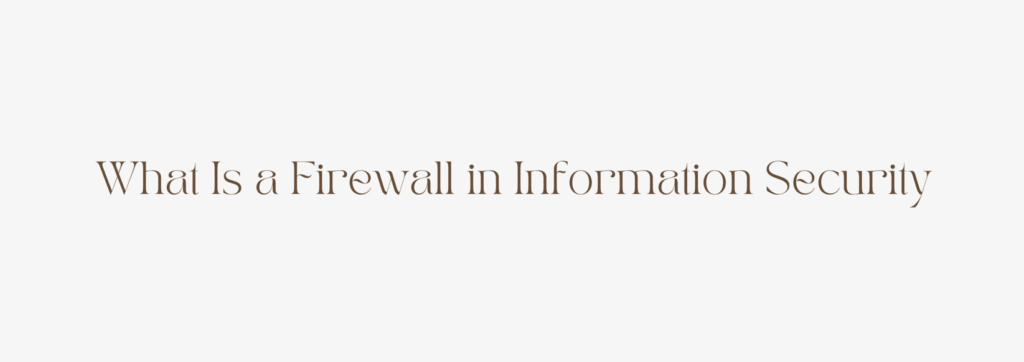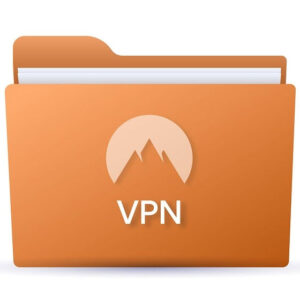
In the world of information security, a firewall is one of the most critical tools for protecting data, systems, and networks from unauthorized access. As cyber threats become more advanced and frequent, understanding what a firewall is and how it works is essential for individuals, businesses, and IT professionals alike.
This article explains the role of firewalls in information security, their key types, benefits, and real-world examples.
What Is a Firewall?
A firewall is a network security device—either hardware, software, or a combination of both—that monitors and controls incoming and outgoing traffic based on pre-set security rules. It acts as a protective barrier between a trusted internal network and untrusted external sources, such as the internet.
Firewalls help prevent unauthorized users or malicious software from accessing private networks, making them a fundamental component of any cybersecurity strategy.
Importance of Firewalls in Information Security
In the context of information security, firewalls serve several critical functions:
- Protect sensitive data from external threats
- Prevent unauthorized access to private networks
- Monitor traffic to detect suspicious activity
- Block malware and hacking attempts in real time
- Enforce internal security policies
Without a firewall, a network is left exposed to a wide range of cyberattacks, including data breaches, phishing, denial-of-service (DoS) attacks, and ransomware.
Types of Firewalls in Information Security
Firewalls come in various forms, each offering different levels of protection. Below are the most common types used in modern cybersecurity environments:
1. Packet-Filtering Firewall
What it does:
Filters traffic based on predefined rules like IP address, port number, and protocol. It inspects each packet’s header but not the content.
Pros:
-
- Lightweight and fast
- Easy to implement
Cons:
-
- Limited protection
- Vulnerable to spoofing and advanced attacks
Best for:
Basic network protection in small-scale environments.
2. Stateful Inspection Firewall
What it does:
Tracks the state of active connections and determines whether a packet is part of a valid session. It analyzes both the packet header and the connection state.
Pros:
-
- Offers better security than packet-filtering firewalls
- More dynamic and context-aware
Cons:
-
- Requires more resources
- May slow down high-traffic networks
Best for:
Medium-sized businesses and enterprise networks.
3. Proxy Firewall (Application Layer Firewall)
What it does:
Acts as an intermediary between users and the internet. It inspects traffic at the application layer, providing deeper analysis.
Pros:
-
- Strong application-level protection
- Can hide internal IP addresses
Cons:
-
- Slower performance
- Complex to configure
Best for:
Organizations that require deep inspection of application traffic.
4. Next-Generation Firewall (NGFW)
What it does:
Combines traditional firewall features with advanced tools like intrusion prevention systems (IPS), deep packet inspection (DPI), and application awareness.
Pros:
-
- Detects modern threats like ransomware and zero-day attacks
- Granular control over applications and users
Cons:
-
- Higher cost
- Requires skilled IT staff
Best for:
Enterprises needing top-tier, layered security.
5. Cloud-Based Firewall (Firewall as a Service – FWaaS)
What it does:
A cloud-hosted firewall that provides protection for cloud-based infrastructure, SaaS applications, and remote teams.
Pros:
-
- Scalable and flexible
- Easy to manage from anywhere
Cons:
-
- Depends on internet availability
- Limited customization in some cases
Best for:
Organizations using cloud platforms or with distributed workforces.
Real-World Examples of Firewall Solutions
Here are some well-known firewall products used across industries:
- Cisco ASA – Enterprise-grade firewall offering advanced threat protection
- Fortinet FortiGate – NGFW with strong intrusion prevention and application control
- pfSense – Open-source firewall solution popular among small businesses
- SonicWall – Versatile firewall for SMBs and enterprises alike
- Cloudflare – Offers cloud-based web application firewalls (WAF) and DDoS protection
Conclusion
A firewall is a foundational element of information security, playing a vital role in defending networks and systems from cyber threats. Whether you’re an individual user or managing enterprise infrastructure, the right firewall can help secure your data, prevent breaches, and maintain privacy.
By understanding the different types of firewalls—packet-filtering, stateful inspection, proxy, next-gen, and cloud-based—you can choose the solution that best fits your security needs.
Investing in the right firewall is not just a technical decision—it’s a strategic move toward building a safer digital environment.










3 Comments
Comments are closed.